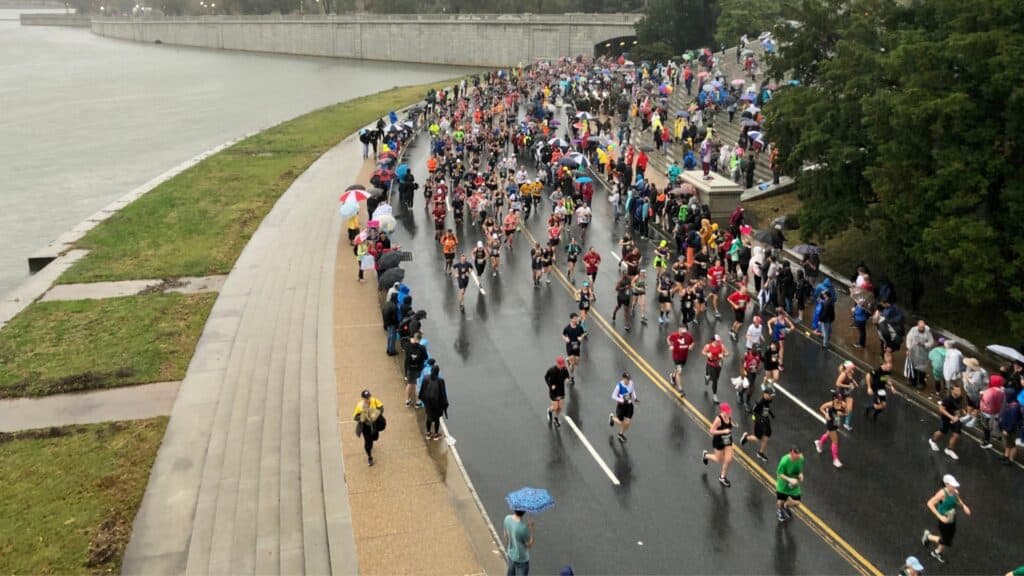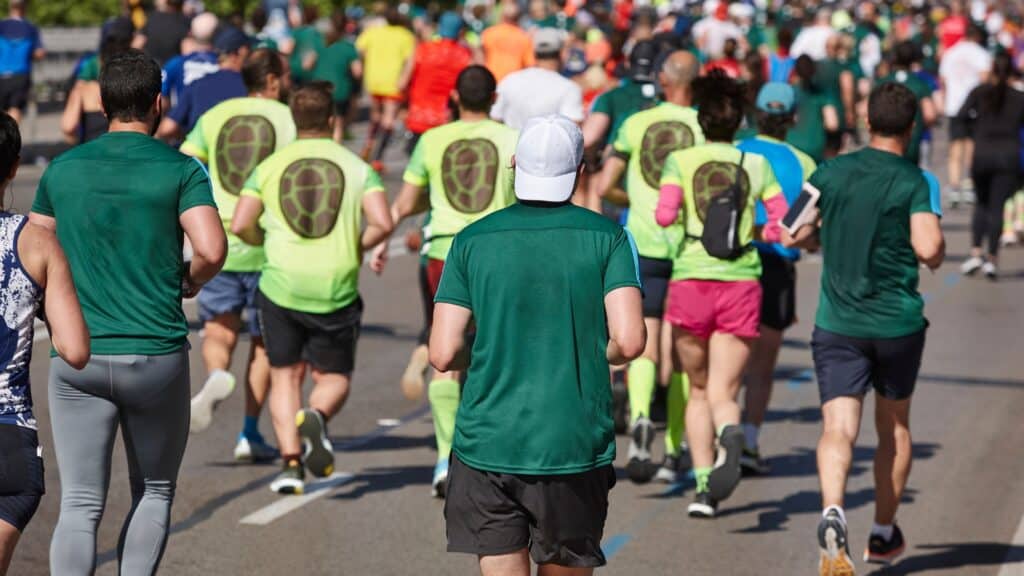Pacing is a critical aspect of marathon racing, and finding the right pace can significantly impact your race day performance.
Whether you’re a seasoned marathoner or preparing for your first 26.2-mile journey, understanding how to calculate your race pace is essential for achieving your goals and crossing the finish line strong.
In this guide, we’ll explore the key factors to consider when determining your marathon pace and provide practical tips to help you optimize your pacing strategy.

Assess Your Fitness Level:
- Before calculating your marathon pace, it’s essential to assess your current fitness level. Recent race performances, particularly at shorter distances like the 5km, 10km, and half marathon, can provide valuable insights into your running speed and endurance. Take note of your finishing times and use them as reference points for estimating your marathon pace.
Use the Rule of Thumb:
- A simple rule of thumb for calculating your marathon pace is to progressively subtract a certain number of seconds per kilometer from your 5km race pace. Start by determining your 10km pace by subtracting a modest increment from your 5km pace. Then, subtract another increment to estimate your half marathon pace. Finally, subtract an additional increment to arrive at your target marathon pace.
Factor in Fitness Progression:
- Consider how your pace varies as you increase the distance. Some runners maintain a consistent pace across different race distances, while others may experience a slight slowdown with longer races. Take into account your individual fitness progression and adjust your target marathon pace accordingly. If you’ve been consistently improving your race times, you may be capable of running at a slightly faster pace than your previous marathon.
Aim for Even Splits:
- Strive for even pacing throughout the marathon, aiming to maintain a consistent pace from start to finish. Avoid the common mistake of starting too fast, as this can lead to early fatigue and a significant slowdown in the later stages of the race. By pacing yourself evenly, you’ll conserve energy and increase your chances of finishing strong.
Practice Your Pacing Strategy:
- Incorporate marathon pace runs into your training regimen to familiarize yourself with your target pace. Schedule long runs at your goal marathon pace to simulate race conditions and build endurance. Pay attention to your perceived effort and heart rate during these runs, as they can provide valuable feedback on your pacing strategy.

Listen to Your Body:
- Listen to your body’s signals during training runs and adjust your pace accordingly. If you’re struggling to maintain your target pace, it may indicate that you need to adjust your pacing strategy or revisit your training plan. Be flexible and adaptable, and don’t hesitate to make adjustments as needed to optimize your performance on race day.
By following these steps and taking a thoughtful approach to pacing, you can calculate your marathon race pace effectively and set yourself up for success on race day. Remember that pacing is as much a mental skill as it is physical, so stay focused, stay disciplined, and trust in your training. With careful planning and smart pacing, you can maximize your performance and achieve your marathon goals.



Comments are closed.